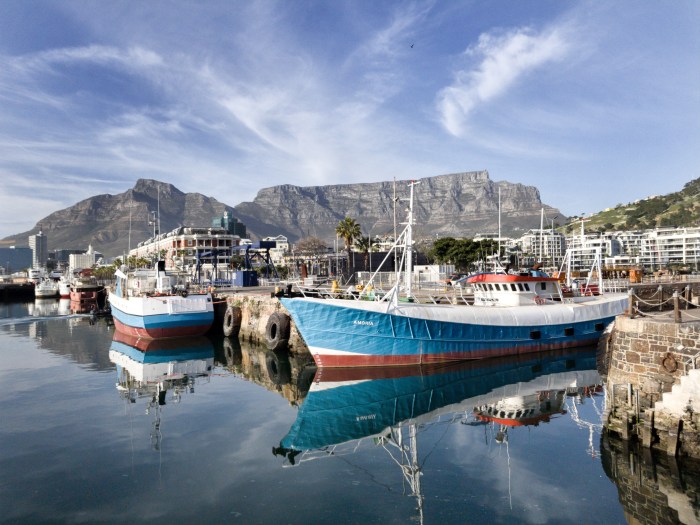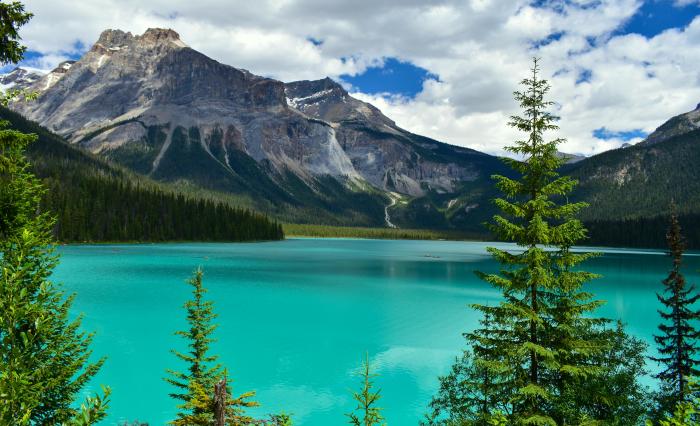Best places to visit in Azerbaijan: A captivating journey through a land steeped in history and breathtaking landscapes awaits. From the ancient city of Baku, with its stunning architecture, to the mesmerizing rock art of Gobustan, Azerbaijan offers a diverse tapestry of experiences for every traveler. Discover the unique charm of this fascinating country, perfect for history buffs, nature lovers, and those seeking cultural immersion.
Azerbaijan boasts a rich tapestry of history, culture, and natural beauty, making it a compelling destination for travelers. This guide delves into the top destinations, activities, and essential information to help you plan your perfect Azerbaijani adventure, whether you’re interested in ancient sites, bustling city life, or serene mountain retreats.
Introduction to Azerbaijan
Azerbaijan, a landlocked country nestled in the Caucasus region, boasts a rich tapestry of history, culture, and stunning landscapes. From its ancient Silk Road heritage to its vibrant modern cities, Azerbaijan offers a unique blend of East and West. Its strategic location has influenced its development, shaping a distinct identity that resonates with visitors. This country, with its rich history and cultural diversity, is a rewarding destination for travelers seeking a captivating experience.Azerbaijan’s unique aspects lie in its blend of ancient traditions and contemporary advancements.
The country’s historical significance as a crossroads of civilizations is palpable, evident in its architecture, cuisine, and artistic expressions. This fusion creates a fascinating and immersive experience for visitors, a journey through time and cultures.
Historical Landmarks and Cultural Heritage
Azerbaijan’s historical significance is deeply rooted in its past. Ancient settlements and archaeological sites offer glimpses into the lives of past civilizations. The country’s architectural heritage is remarkable, showcasing a diverse range of styles, from medieval citadels to grand mosques and palaces. These structures stand as testaments to the country’s long and eventful history. The UNESCO World Heritage Sites, including the Gobustan Rock Art Cultural Landscape, provide invaluable insights into the region’s artistic and cultural evolution.
Best Time to Visit Different Regions
The best time to visit Azerbaijan varies depending on the region and the activities you plan to undertake. The spring (April-May) and autumn (September-October) seasons offer pleasant temperatures and fewer crowds, making them ideal for exploring. Summer (June-August) brings warm weather and sunshine, perfect for enjoying the coastal areas and outdoor activities, but also higher prices and potential crowds.
Winter (November-March) offers a unique experience with snowfall and a chance to witness Azerbaijan’s landscapes transformed, but travel may be impacted by the weather. For example, hiking in the Caucasus mountains during the summer offers beautiful views, while the autumn season provides a vibrant display of colors. The Caspian Sea region, especially, is best explored during the warmer months.
Diverse Landscapes of Azerbaijan
Azerbaijan’s landscapes are diverse, ranging from the towering Caucasus Mountains to the vast Caspian Sea coastline. The country’s geography plays a vital role in shaping its culture and economy. The following table highlights the diverse landscapes and their key attractions:
| Landscape Type | Description | Key Attractions |
|---|---|---|
| Mountainous | Rugged terrain, offering challenging hiking trails and breathtaking panoramic views. | Caucasus Mountains, scenic viewpoints, trekking opportunities |
| Coastal | The Caspian Sea shoreline, characterized by picturesque beaches and seaside resorts. | Seaside resorts, beaches, opportunities for water sports |
| Steppe | Vast flatlands and grasslands, dotted with historical sites and evidence of nomadic culture. | Historical sites, archaeological discoveries, cultural experiences |
| Urban | Modern cities like Baku, Sheki, and Ganja, showcasing a blend of traditional and contemporary architecture. | Baku’s architectural wonders, historical centers, vibrant city life |
Top Tourist Destinations: Best Places To Visit In Azerbaijan
Azerbaijan boasts a captivating blend of historical grandeur and modern vibrancy, attracting visitors from around the globe. From ancient rock art to stunning mountain landscapes, the country offers a diverse range of experiences for every type of traveler. Exploring these destinations provides a glimpse into the rich tapestry of Azerbaijani culture and history.
Azerbaijan boasts stunning landscapes, from the Caucasus Mountains to the Caspian Sea. While I’m researching the best places to visit there, I stumbled across news about the impending cyclone in northern Australia, northern australia braced for cyclone sandwich. Hopefully, the beautiful natural wonders of Azerbaijan will remain unscathed as I plan my trip, and I’m sure there are some incredible places to explore there.
It’s good to keep an eye on global events, even while focusing on travel plans!
Popular Tourist Destinations, Best places to visit in azerbaijan
Azerbaijan’s top tourist destinations are renowned for their unique attractions and cultural significance. Each location offers a distinct experience, catering to diverse interests. Baku, the vibrant capital, stands out for its historical charm and modern architecture. Other significant sites, like Gobustan’s rock art and Sheki’s architectural heritage, showcase Azerbaijan’s deep-rooted past. These destinations, alongside Gabala’s mountain beauty and Ismayilli’s cultural sites, paint a complete picture of Azerbaijan’s multifaceted appeal.
Key Features and Attractions
Azerbaijan’s most popular tourist destinations offer a rich array of experiences. Baku, the capital, captivates with its ancient Icheri Sheher (Inner City), a UNESCO World Heritage site. Modern marvels, like the Flame Towers, stand in stark contrast to the historic architecture, showcasing the country’s dynamism. Gobustan, a UNESCO World Heritage site, provides a window into prehistory, with its intricate petroglyphs that tell stories of ancient cultures.
Sheki, a city steeped in history, boasts stunning architecture, reflecting centuries of cultural exchange. Gabala, nestled in the Caucasus Mountains, is a haven for nature lovers, with hiking trails and skiing opportunities. Ismayilli, a town steeped in history, offers insights into Azerbaijani culture through its museums and historical sites.
Historical Significance
Each destination holds a unique place in Azerbaijan’s rich history. Baku’s historical significance extends back centuries, reflecting its role as a key trade center. Gobustan’s rock art provides invaluable insights into the lives and beliefs of ancient humans. Sheki, known for its silk production, showcases the cultural exchanges that shaped the region. Gabala, situated in a mountainous region, holds cultural significance and played a role in various historical periods.
Ismayilli, with its historical sites, demonstrates the area’s cultural and historical legacy.
Comparison of Destinations
Different destinations appeal to various traveler types. Baku attracts those seeking a blend of history and modern city life, with its museums, bustling markets, and towering skyscrapers. Gobustan draws those interested in prehistory, offering a unique glimpse into ancient civilizations. Sheki is ideal for those seeking a dose of culture and architecture. Gabala entices nature lovers with its mountain scenery and outdoor activities.
Ismayilli caters to those interested in cultural history and historical sites. The variety ensures there’s a destination to match every traveler’s preferences.
Top 5 Tourist Attractions
| Destination | Feature | Activities |
|---|---|---|
| Baku | Historic Old City, modern skyscrapers | Sightseeing, museums, shopping |
| Gobustan | Rock art site | Exploring ancient petroglyphs, hiking |
| Sheki | Historic city, beautiful architecture | Visiting cultural sites, enjoying the city |
| Gabala | Mountain resort town | Hiking, skiing, enjoying nature |
| Ismayilli | Cultural sites, history | Visiting museums, exploring historical places |
Activities and Experiences
Azerbaijan offers a vibrant tapestry of activities, from exploring ancient historical sites to immersing oneself in rich cultural traditions. The country’s diverse landscapes, from the Caucasus Mountains to the Caspian Sea coast, provide ample opportunities for outdoor adventures and relaxation. This section will delve into the various experiences available, highlighting the cultural significance and local customs associated with each.Azerbaijan’s activities cater to diverse interests, ensuring an enriching experience for every visitor.
From the thrill of hiking in majestic mountains to the discovery of historical treasures, there’s something for everyone. Respect for local customs and traditions is key to a positive and memorable visit.
Hiking in the Caucasus Mountains
Hiking in the Caucasus Mountains provides breathtaking views and a chance to connect with nature’s grandeur. The region boasts numerous trails, catering to various skill levels, from easy strolls to challenging climbs. Hiking trails often lead to traditional Azerbaijani villages nestled within the valleys, offering glimpses into local life. Respecting the environment is paramount during hikes, ensuring minimal impact on the natural surroundings.
Pack appropriate clothing and gear, and be aware of potential weather changes. Carrying water and snacks is crucial, especially for longer hikes.
Sightseeing in Baku
Baku, the vibrant capital, is a treasure trove of historical sites and cultural attractions. From the iconic Flame Towers to the ancient walls of the Old City, Baku offers a rich tapestry of experiences. Guided tours are available to provide insights into the city’s history and architecture. Consider visiting the Heydar Aliyev Center, a modern architectural marvel that houses exhibitions and cultural events.
Respect for historical sites and cultural norms is crucial. Visitors should be mindful of the local customs and dress appropriately when visiting religious sites.
Cultural Immersion in Sheki
Sheki, a city steeped in tradition, provides an unparalleled opportunity for cultural immersion. Visiting artisan workshops allows visitors to witness the intricate craftsmanship of traditional Azerbaijani arts and crafts. Experience the vibrant colors of hand-woven carpets, the delicate designs of silverware, or the artistry of wood carving. Participating in local ceremonies and festivals adds another layer to the cultural experience.
Respecting local customs is paramount, including appropriate dress and interaction with locals.
Azerbaijan boasts stunning landscapes and historical sites, perfect for a memorable trip. Thinking about packing light for your travels? Knowing the new Delta checked bag policy and finding the best amazon carry on travel essentials here is key to a smooth journey. Once you’ve got your packing sorted, you can focus on experiencing the rich culture and beauty of this fascinating country.
Relaxation in Gabala
Gabala, nestled in the foothills of the Caucasus, offers a haven for relaxation and rejuvenation. The region’s natural beauty, coupled with its thermal springs and spas, provides a tranquil escape from the hustle and bustle of city life. Visitors can enjoy the serenity of the surrounding mountains, the therapeutic properties of natural mineral waters, and indulge in rejuvenating spa treatments.
Dress comfortably for outdoor activities, and be mindful of the local customs during your stay.
History Exploration in Gobustan
Gobustan, a UNESCO World Heritage site, is a window into the past. The region’s ancient rock art provides invaluable insights into the lives and beliefs of early humans. Guided tours are essential to understand the historical significance of the site. Respect for the ancient art and historical context is crucial. Visitors should maintain a respectful distance from the rock art to preserve its integrity.
Activities and Locations
| Activity Type | Location | Description |
|---|---|---|
| Hiking | Caucasus Mountains | Explore scenic trails, enjoy nature, and experience traditional Azerbaijani villages. |
| Sightseeing | Baku | Explore historical sites, visit museums, and experience the vibrant city life. |
| Cultural Immersion | Sheki | Experience local traditions, visit artisan workshops, and witness the intricate craftsmanship of Azerbaijani arts and crafts. |
| Relaxation | Gabala | Enjoy the natural beauty, relax at spas, and experience the therapeutic properties of natural mineral waters. |
| History Exploration | Gobustan | Discover ancient rock art, learn about history, and appreciate the UNESCO World Heritage site. |
Accommodation and Transportation
Azerbaijan offers a diverse range of accommodation options, catering to various budgets and preferences. From luxurious hotels to cozy guesthouses and budget-friendly hostels, travelers can find the perfect place to rest and recharge after exploring the country’s many wonders. Efficient transportation networks connect the major cities and attractions, allowing for convenient travel between destinations.Finding suitable accommodation and navigating the transportation system are essential aspects of any travel plan.
This section will provide insights into the different types of lodging and transportation options available, alongside cost comparisons and practical examples.
Accommodation Options
Various accommodation options are available across Azerbaijan, ranging from luxurious hotels to budget-friendly guesthouses and hostels. The choice depends on individual preferences and financial considerations. For those seeking high-end experiences, luxurious hotels offer premium amenities, exquisite service, and exceptional comfort. Conversely, budget-conscious travelers can find affordable guesthouses and hostels that provide basic necessities without compromising on comfort.
- Luxury Hotels: These establishments offer premium amenities, fine dining, and exceptional service, often found in major cities like Baku. Examples include the Fairmont Baku, Crystal Palace, and the Hilton Baku, where suites and premium rooms often command higher prices.
- Boutique Hotels: Often located in historic or culturally significant areas, these hotels provide unique experiences with a personalized touch. Prices vary based on location and amenities.
- Guesthouses: These smaller establishments offer a more intimate and local experience, often with family-run operations and a warm atmosphere. They represent a good balance between cost and comfort.
- Hostels: Ideal for budget travelers, hostels provide basic accommodations with shared facilities like dormitories. Prices typically reflect their shared-room nature.
Transportation Methods
Azerbaijan has a well-developed transportation infrastructure, offering various options to reach different destinations. This includes air travel, rail transport, taxis, and buses, catering to different travel styles and budgets.
- Flights: Air travel is the most efficient way to cover long distances between major cities. Flights are often the preferred choice for reaching remote destinations or for those with limited time. Prices for flights vary depending on the season, demand, and the airline.
- Trains: Train travel offers a comfortable and scenic way to travel between cities, particularly for longer journeys. It provides a unique opportunity to experience the Azerbaijani landscape. Prices are generally more affordable than flights, but journeys may take longer.
- Taxis: Taxis are a convenient mode of transportation for local travel. Their availability and affordability make them a practical option for getting around cities and towns. Prices vary depending on the distance and traffic conditions.
- Buses: Buses are the most budget-friendly option for travel between cities. They offer a direct and reliable way to reach destinations without compromising on comfort. Travel times are typically longer compared to other options.
Transportation Costs
The cost of transportation in Azerbaijan varies considerably depending on the chosen method and the distance covered. Flight costs are typically higher than other options, but offer significant time savings. Train fares are more affordable than flights for longer distances, but slower. Taxi fares are dependent on the distance and time spent in traffic, while bus fares are the most economical option for city-to-city travel.
Azerbaijan boasts stunning landscapes and historical sites, perfect for a memorable trip. From the ancient city of Baku to the breathtaking Caucasus Mountains, there’s something for everyone. If you’re looking for a chic Parisian getaway, you might also consider checking out some of the new trips inspired by Emily in Paris, like new trips emily in paris , for a unique experience.
Ultimately, Azerbaijan offers a captivating blend of culture and nature, making it a must-see destination.
| Transportation | Description | Cost |
|---|---|---|
| Flight | Airport to city | Moderate |
| Train | City to city | Affordable |
| Taxi | Local transportation | Varies |
| Bus | City to city | Budget-friendly |
Food and Cuisine

Azerbaijan’s culinary scene is a vibrant tapestry woven from influences spanning centuries. From the rich, flavorful stews of the Caucasus to the delicate pastries of the Silk Road, Azerbaijani cuisine offers a delightful journey through history and tradition. The country’s diverse geography and cultural exchanges have resulted in a unique and delicious blend of tastes and textures, making it a culinary adventure for any visitor.
A Diverse Culinary Landscape
Azerbaijani cuisine is renowned for its use of fresh, seasonal ingredients, often combined with unique spices and herbs. The abundance of vegetables, fruits, and meats reflects the fertile land and the country’s rich agricultural heritage. A significant part of the culinary experience is the emphasis on sharing meals, reflecting the communal values deeply rooted in Azerbaijani society. This emphasis on communal dining and the rich, fragrant dishes creates an unforgettable experience.
Must-Try Dishes
Azerbaijani cuisine boasts a wide array of delectable dishes. A few standouts include:
- Plov: This national dish, a fragrant rice dish, is a testament to the country’s agricultural prowess. Traditionally cooked with meat and vegetables, it’s often served with a side of salad or fresh herbs. Variations in the meat and vegetables used can dramatically alter the flavor profile.
- Dolma: This popular appetizer consists of grape leaves, rice, and meat, creating a savory and delicate filling. The process of rolling the leaves and the careful preparation of the filling contribute to the dish’s unique flavor. The freshness of the ingredients plays a key role in the dish’s taste.
- Qutab: This crispy pastry, often filled with meat, is a delightful treat. The delicate dough, combined with the savory filling, creates a delightful balance of textures and flavors. The crispy exterior and the soft filling make it a must-try for every visitor.
- Shorba: This flavorful soup, often featuring broth and various vegetables, is a comforting and satisfying option. Shorba is typically made with a combination of fresh vegetables, providing a delicious and nutritious meal. The rich broth, combined with the savory vegetables, offers a taste of the region’s culinary heritage.
Unique Flavors and Ingredients
Azerbaijani cuisine often incorporates unique flavors and ingredients. Fresh herbs like cilantro, parsley, and mint are commonly used, adding a vibrant freshness to dishes. The use of saffron and other spices, like turmeric and cumin, enhances the aromatic complexity of the meals. Local fruits and vegetables are also heavily incorporated, showcasing the seasonal bounty of the region.
These ingredients work together to create a tapestry of unique and delicious flavors.
Cultural Significance of Food
Food plays a significant role in Azerbaijani society. Sharing meals with family and friends is a cornerstone of social interaction. Traditional gatherings often revolve around large communal meals, showcasing the warmth and hospitality of the Azerbaijani people. The preparation and presentation of meals are often meticulous, reflecting the cultural value placed on hospitality and the importance of food as a symbol of togetherness.
Local Markets and Food Stalls
To truly experience Azerbaijani cuisine, visit local markets and food stalls. These bustling hubs offer an authentic glimpse into Azerbaijani culinary traditions. The sights, smells, and sounds of the markets will immerse you in the vibrant atmosphere of Azerbaijani food culture. Bargaining is a common practice, and you can often find incredible deals on fresh produce and delicious treats.
Traditional Azerbaijani Dishes
| Dish | Ingredients | Description |
|---|---|---|
| Plov | Rice, meat, vegetables (carrots, onions, garlic) | A national dish, often featuring lamb or chicken, showcasing the region’s agricultural bounty. |
| Dolma | Grape leaves, rice, minced meat, herbs, spices | A popular appetizer or side dish, filled with a flavorful blend of ingredients. |
| Qutab | Thin dough, meat (lamb or beef), herbs, spices | A crispy pastry, often served as a snack or light meal. |
| Shorba | Broth, vegetables (potatoes, carrots, onions), herbs, spices | A flavorful soup, offering a comforting and nourishing experience. |
Last Point

In conclusion, Azerbaijan offers a captivating blend of history, culture, and natural wonders. From the vibrant energy of Baku to the tranquil beauty of Gabala, there’s something for everyone. This comprehensive guide provides the insights you need to plan your unforgettable Azerbaijani adventure. Prepare to be amazed by the unique charm and hospitality of this captivating country.


























